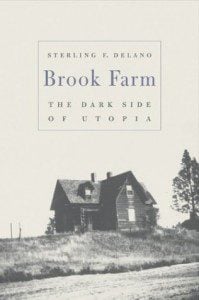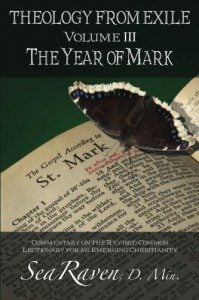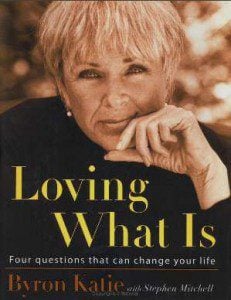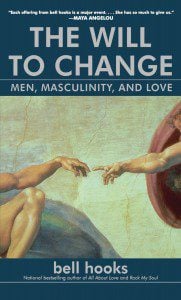The following is the first of two lectionary commentaries on the Gospel lesson for the 4th Sunday of Advent. The second is titled “Let It Be” and focuses on the final five verses of this week’s reading from Luke 1.
Focal Question: How is God calling you this Advent season to slow down, open your eyes in wonder, and expectantly wait for is already in the process of being born?
I’m always wary of using the word “countless” — as in “She’s been in countless films” or “He’s scored countless touchdowns” or “They’ve made countless millions.” The word “countless” almost always makes me think to myself, “Really?” “Countless?” We live in the Information Age. Too often the word “countless” is simply a cypher that really means “I’m feeling a too lazy to be bothered to do research and fact checking.” So I say with some trepidation that the the following prayer has been prayed literally countless times:
Hail Mary, full of grace, the Lord is with thee; Blessed art thou amongst women, and blessed is the fruit of thy womb, Jesus. Holy Mary, Mother of God, pray for us sinners, now and at the hour of our death. Amen.
This famous prayer, known in English as the “Hail Mary,” is inspired in part by Gabriel’s greeting to Mary in Luke 1:28. Another core section of the prayer (“Blessed art thou amongst women and blessed is the fruit of thy womb”) is from a few verses later in Luke 1:42. The “Hail Mary” is a central part of the Rosary (a method of repetitive devotional prayer using a string of beads), and I would not know how even to begin to estimate the number of Christians who have prayed this prayer repeatedly through the centuries, especially since the prayer is popular in both the Roman Catholic and Eastern Orthodox tradition, although the prayer appears in slightly different forms in the these two different streams of Christianity. Although the Catholic Encyclopedia says that, “There is little or no trace of the Hail Mary as an accepted devotional formula before about 1050, the popularity of the prayer in the last 1,000 years has made up for the lost time of the prayer’s absence in Christianity’s first millennium. The prayer is also famously known as the “Ave Maria,” which is Latin for “Hail Mary,” and these words have inspired many beautiful works of music:
http://www.youtube.com/watch?v=VaQ4KzbrMSQ
My college roommate was a cradle Roman Catholic, who kept an icon of the Virgin Mary beside his bed, and I remember asking him to teach me the words of the Hail Mary. As a lifelong Protestant, there can be a sense in which our conception of church history starts with Jesus, continues for about a century, then skips 1,500 years to the Reformation, until continuing to the present. For me, the “Hail Mary” prayer is one of many symbols of those missing years of church history and represents a tangible link to some of the streams of Christian spirituality into which I have barely dipped my toe. As a Protestant, the biblical words of the “Hail Mary” are familiar, but less familiar are the practices such as praying through a saint, invoking a powerful female image, and repeating rote prayers. I have never stopped believing that any individual can pray, experience, and encounter God directly for him or herself, but the words of the Hail Mary invite me to take the “Communion of the Saints” seriously. The words invite me to consider the breathtaking — and somehow comforting — implications of what it could mean ask someone else to pray for us, “now and at the hour of our death.” Having been raised in worship services that were dominated by male leadership, male voices, and masculine imagery, I am also drawn to the feminine imagery of Mary such as “fruit of thy womb.” She was not full of power, but full of grace. The prayer spoke, not of God the Father, but of the “Mother of God.” What stunning words: Mother of God. I am also accustomed to extemporaneous prayers that are improvised on the spot and never heard again. In contrast, this prayer had been prayed countless times. As I consider the countless times the Hail Mary has been prayed, I am reminded of a line from the fourth part of T.S. Eliot’s poem “The Four Quartets.” Eliot writes:
You are not here to verify, Instruct yourself, or inform curiosity Or carry report. You are here to kneel Where prayer has been valid.
So, as vital as I believe it is to be open to experiencing God anew in the twenty-first century, we also need to bring the best of our history with us. There is a time for verification and curiosity, but sometimes it is good for our souls to sink to our knees where prayer has been valid. Our invitation for this final Sunday of Advent is to slowly sink into God’s presence, which — like a womb — is always already within us, with us, and around us. Advent is a gestation period, a pregnant pause in anticipation of a birth. We are invited to slow down, hold the space, and see what God is birthing in our midst. One of the core tenants of the spiritual direction program in which I was trained — a tenant that sought to counteract our frenetic culture — was, “We start slowly, so that later we can slow down.” In the wake of the consumeristic momentum that began even before Black Friday, when we are increasingly pressured to save the economy with Christmas presents, the four weeks of Advent sound a contrasting invitation: “Jesus was not born to be the patron saint of Fourth Quarter earnings.”* As we anticipate the Feast of the Nativity, our invitation is to slow down, open ours eyes in wonder, and expectantly wait for is already in the process of being born.
Notes
*I heard the author John Boykin say that, “Jesus was not born to be the patron saint of Fourth Quarter earnings,” on NPR back in 2004, but I do not have a link to an exact online reference. If someone have a has a link to this quote that leads back to NPR, The New York Times, Reuters, or a similar source, please let me know in the comments section.
Resources for Reclaiming a More Meaningful Advent and Christmas Season
- Marcus Borg and John Dominic Crossan, The First Christmas: What the Gospels Really Teach About Jesus’s Birth.
- Michael Slaughter, Christmas Is Not Your Birthday: Experience the Joy of Living and Giving like Jesus.
- Anna Getty, I’m Dreaming of a Green Christmas: Gifts, Decorations, and Recipes that Use Less and Mean More.
- Bill McKibben, Hundred Dollar Holiday: The Case For A More Joyful Christmas.
- Jo Robinson, Unplug the Christmas Machine: A Complete Guide to Putting Love and Joy Back into the Season.
- Rick McKinley, et al, Advent Conspiracy: Can Christmas Still Change the World?
- The Advent Conspiracy: www.adventconspiracy.org
- New American Dream, “Simplify the Holidays”: www.newdream.org/holiday
- “Tips for Parenting in a Commercial Culture”:www.newdream.org/kids/kids-brochure.pdf
- Buy Nothing Christmas www.buynothingchristmas.org.
The following is the first of two lectionary commentaries on the Gospel lesson for the 4th Sunday of Advent.The second is titled “Let It Be” and focuses on the final five verses of this week’s reading from Luke 1.
The Rev. Carl Gregg is a trained spiritual director, a D.Min. candidate at San Francisco Theological Seminary, and the pastor of Broadview Church in Chesapeake Beach, Maryland. Follow him on Facebook (facebook.com/carlgregg) and Twitter (@carlgregg).












